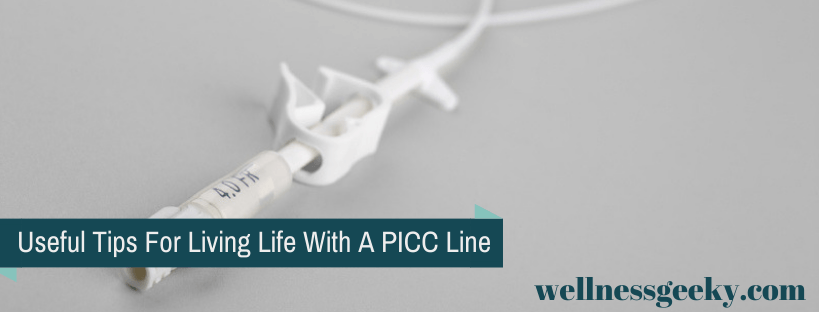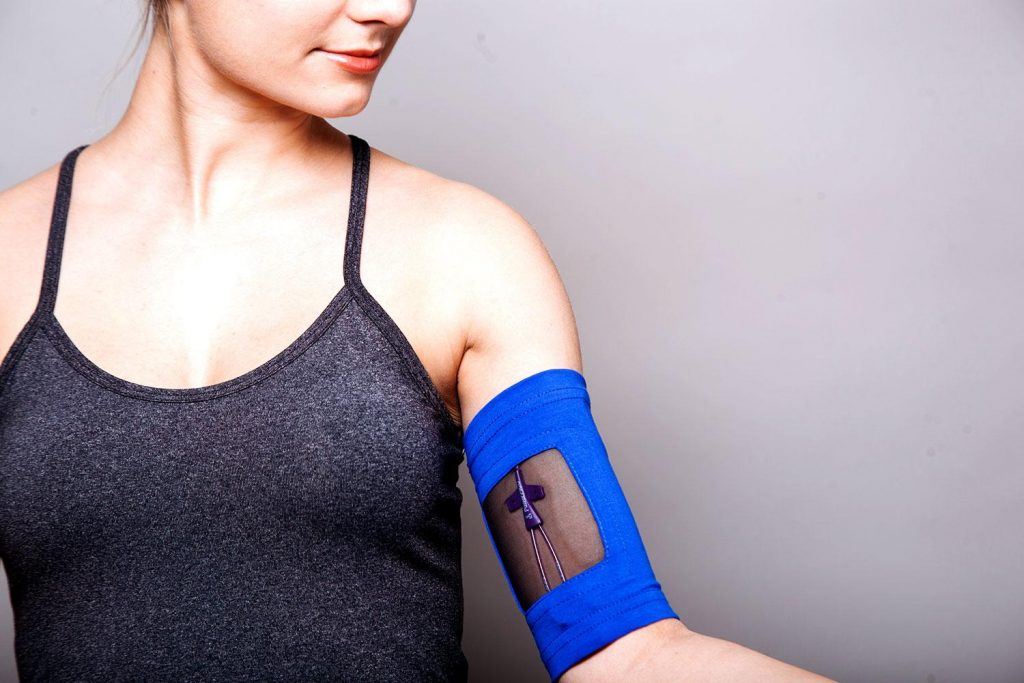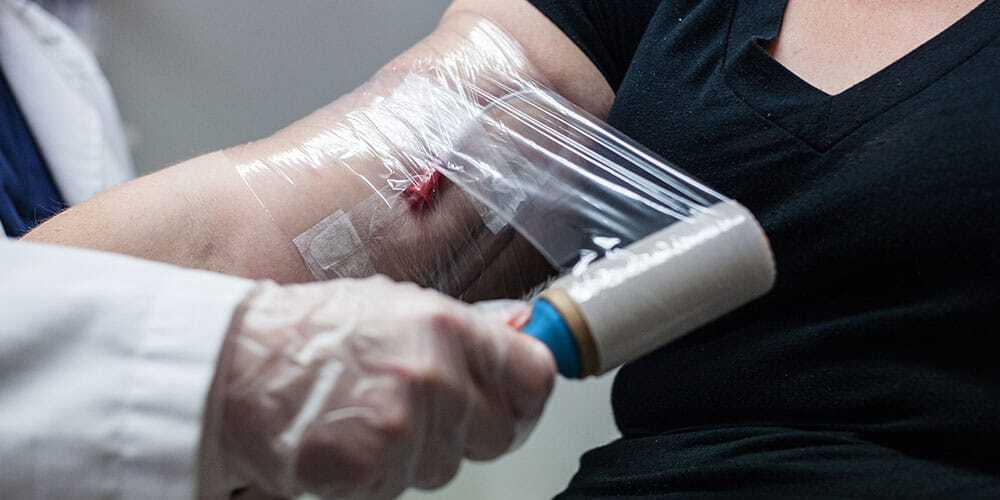
Peripherally Inserted Central Catheter (PICC) Line sounds like a very intimidating medical tool, right? From the word catheter itself, you are likely to imagine a small tube line being inserted into your private part to drain urine.
Although similar in functionality, a PICC line is being inserted somewhere else, typically in the upper arm. But, it can also be inserted in the leg or neck. You can call it a permanent IV line, which can stay for weeks, months, or even years, depending on the need.
Why The Need For PICC Line
This catheter is used by people who need more than the usual number of blood extractions and/or intravenous antibiotics, among others. This can also be applicable for those with restricted food intake or under intermittent fasting.
Regardless of whether the patient can tolerate more pain or not, the doctors may opt not to continue IV insertions any longer.
In short, instead of getting peripheral IV insertion every so often that the veins would no longer hold out and you end up being sore and bruised, you get the PICC line instead.
This kind of catheter is particularly beneficial for children who typically don’t have high pain tolerance but needing IV insertion several times during a treatment period. However, all patients that need a PICC line can benefit from it regardless of age.
Since this line will be staying in your body for a significant period of time in most cases, it can be very unpleasant and will take a lot of getting used to. So, how can you do that with a large vein? How do you care for your PICC line?
Here are a few tips to remember when living life with a PICC line:
1. Dressing Is Crucial
A PICC line has to stay in you for a while, so it’s essential that you are comfortable with it from the get-go, or you’ll be in trouble. One of the ways to ensure that you will be at ease with it is having the right kind of dressing and adhesives.
Try to determine whether or not you’re experiencing any kind of discomfort and itching. If the current dressing feels uncomfortable, don’t hesitate to tell your doctor or nurse to change it into something else, like the SealSkin Medical Wrap. They would be more than willing to do that for you.
2. Extension Is Life
PICC lines tend to have just a short protruding tube where all the IV needs will pass through, and this is only designed for medical practitioners to use. However, going to the hospital for treatment every now and then can sometimes be impractical.
The good news is that you can do it yourself without the aid of anyone. This is by requesting to have an extension tubing. It allows you able to hold the access cap and give yourself every infusion and flush that you need.
3. Wear The Most Comfortable PICC Sleeve
Since the PICC line will be somewhat protruding, and even more so when it comes to an extension, it will be at risk of accidents, especially when around small kids. The solution is to have it wrapped up and covered with a PICC line cover.
The ones that they give out at the hospital don’t usually offer as much protection as they should, so you may look for alternatives online.
The important thing is that they have holes for the tubes to go through so that they do not touch your skin directly, worse, press up against your skin and cause rashes and scratches.
They should also be stretchy so that they don’t slide off your arms and can fold over themselves so you have the PICC line covered entirely and out of reach.
4. Handheld Showerhead Will Be A Lifesaver
One of the most critical instructions your healthcare provider will be giving you is to keep your PICC line dry at all times. This is to avoid bacteria from building up when you accidentally or unknowingly spray or soak your PICC line with or in the water.
However, you don’t have to sacrifice hygiene or struggle to maintain cleanliness just because of one inconvenience. Get a handheld showerhead so you could directly splash or spray on every body part while avoiding the area where your PICC line is located.
5. Use Waterproof PICC Line Sleeve When You Need To Get Wet
To serve as an added protection when taking a bath, you may get yourself a PICC line shower cover that is waterproof just to be more sure not to wet your PICC line accidentally. This is also particularly convenient when you don’t want to miss out on some swimming activities with the family.
These waterproof sleeves have a tight suction feature that seals the top and bottom parts of the arm for leakage-free bathing.
PICC Line Infection Symptoms
A bad score in your mouth could be a sign of infection in your PICC line. This can be associated with a significant allergic reaction that happens in your PICC line and this may be associated with a serious medical condition called Stevens-Johnson Syndrome. Low blood pressure (central venous catheter). This could be a sign that you are suffering from a serious medical condition called fluid build-up in your brain. If you have low blood pressure or if you are extremely thirsty, then there is a good chance you could be suffering from a PICC line infection. Swelling around the body. You can have symptoms such as muscle aches, nausea, numbness in your body, and sometimes, vomiting. This could be a sign that you have a bacterial infection in your PICC line. Decreased blood flow. This could be a sign that you have an infection in your line.
How Do I Manage My PICC Line at Home?
Managing a Peripherally Inserted Central Catheter (PICC) line at home requires careful attention to hygiene and maintenance to prevent infection and ensure its proper functioning. A PICC line is a long, thin tube inserted into a large vein in your arm, typically used for delivering medications, fluids, or nutrition directly into the bloodstream. Here's a step-by-step guide on how to manage your PICC line at home:
- Hand Hygiene: Before touching your PICC line, always wash your hands thoroughly with soap and water for at least 20 seconds or use an alcohol-based hand sanitizer. This is essential to prevent introducing bacteria or other contaminants into the line.
- Dressing Care: Inspect the dressing daily for any signs of redness, swelling, drainage, or looseness. Change the dressing as directed by your healthcare provider, using a sterile technique. Ensure the dressing is clean and dry.
- Flushing the Line: Regularly flush your PICC line with saline solution to maintain patency. Follow your healthcare provider's instructions on the frequency and volume of flushes. Flushing helps prevent clot formation and blockages.
- Medication Administration: Administer prescribed medications through the PICC line as instructed. Use sterile techniques when handling medications and maintain a clean environment. Ensure compatibility of medications and flush before and after each administration.
- Monitoring: Monitor for any signs of infection, such as fever, chills, increased redness, or swelling at the insertion site. If you notice any unusual symptoms or signs of infection, contact your healthcare provider immediately.
- Cap Changes: Replace the cap on the end of your PICC line as per your healthcare provider's recommendations. This should be done in a sterile manner to prevent contamination.
- Avoid Water Exposure: Keep your PICC line dry during showers or baths. Cover it with a waterproof, airtight dressing or sleeve to protect it from moisture.
- Clot Prevention: To prevent blood clots, wear compression stockings or take prescribed anticoagulant medications if recommended by your healthcare provider.
- Avoid Tugging or Pulling: Be mindful of not tugging or pulling on the PICC line. It's essential to secure the line properly to prevent accidental dislodgment.
- Follow Up: Adhere to scheduled follow-up appointments with your healthcare provider for line maintenance and to ensure its continued functionality.
Remember, proper PICC line management is crucial to prevent complications and ensure the effectiveness of your medical treatment. Always follow the specific instructions provided by your healthcare team and promptly report any concerns or issues to them.
Parting Words
As mentioned, PICC lines can pose a few inconveniences. But, the ways they can help your health can be invaluable in that you can turn a blind eye to all the few difficulties they can bring.
Instead of feeling sorry for yourself or being annoyed by having to deal with a PICC line, you can just consider yourself blessed that there’s a remedy to your condition. Some don’t even get to have a chance for treatment, let alone live to see another day.



